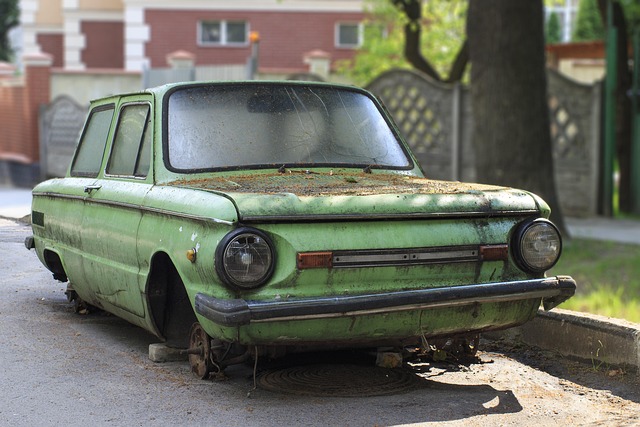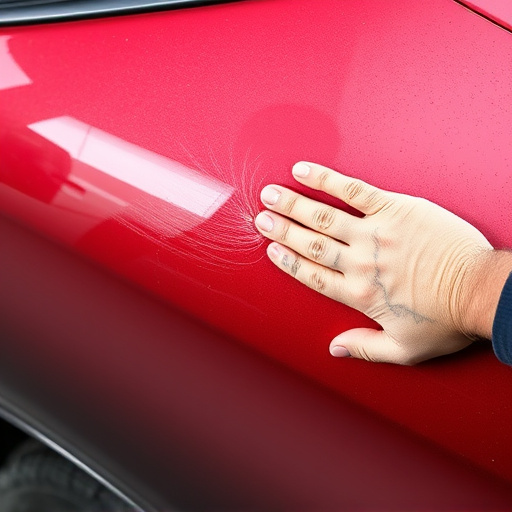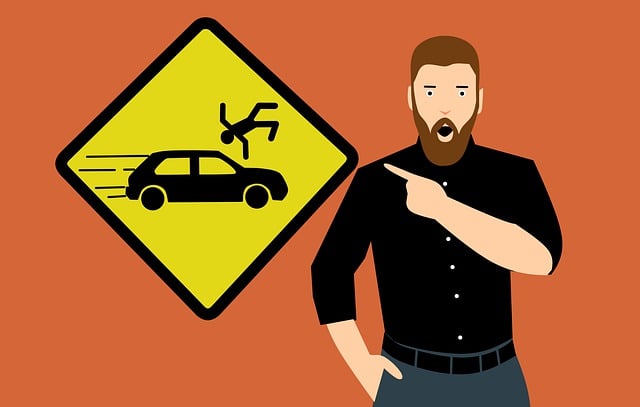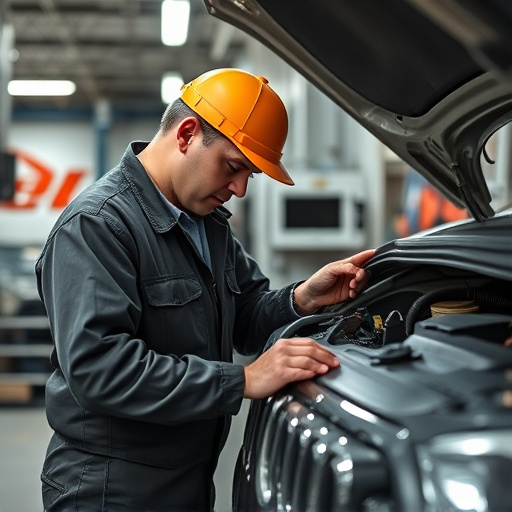Mastering base coat application in car dent repair requires careful preparation, precise technique using airless guns or brushes, and strict adherence to environmental safety standards. Skilled technicians ensure even coverage through thorough mixing, proper ventilation to control VOC emissions, and suitable PPE for worker protection. Compliance with safety regulations is vital to protect workers and the environment, involving measures like PPE usage, ventilated areas, specific waste management, secure storage, and proper disposal. Regular training, PPE provision, and well-ventilated workspaces are essential in industries like auto detailing, frame straightening, and dent repair to maintain quality and avoid legal issues.
In the realm of industrial coatings, the meticulous base coat application is a fundamental step that sets the stage for superior finish quality. This article delves into the intricacies of base coat application, exploring essential techniques and best practices. Additionally, we examine stringent environmental safety regulations governing chemical management during base coat application. Through a comprehensive look at compliance strategies, this guide ensures professionals navigate safe work practices and regulatory adherence, revolutionizing their approach to this critical process.
- Understanding Base Coat Application: Techniques and Best Practices
- Environmental Safety Regulations for Chemical Management
- Compliance Strategies: Ensuring Safe Work Practices and Regulatory Adherence
Understanding Base Coat Application: Techniques and Best Practices
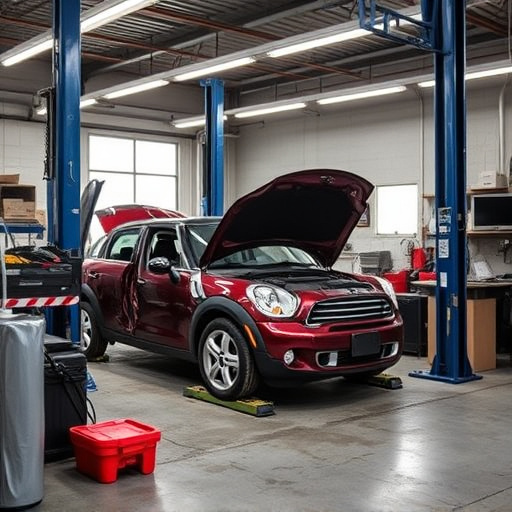
Understanding Base Coat Application: Techniques and Best Practices
Base coat application is a critical step in any car dent repair or vehicle repair service involving car bodywork. It serves as the first layer of protection, creating a smooth surface that enhances the final finish. Skilled technicians employ various techniques to ensure optimal coverage, adhering to strict environmental safety regulations. The process involves carefully preparing the damaged area, applying an even base coat using airless guns or brushes, and allowing it to dry before adding subsequent layers.
Best practices dictate thorough mixing of the base coat to prevent streaks or uneven distribution. Additionally, maintaining proper ventilation in the work area is paramount to comply with environmental standards, as many modern base coats emit volatile organic compounds (VOCs). Technicians should also wear appropriate personal protective equipment (PPE) to shield against chemicals. These measures not only ensure the safety of workers but also contribute to a high-quality, durable finish in car dent repair and vehicle repair services.
Environmental Safety Regulations for Chemical Management

In the realm of collision repair services and automotive industry standards, environmental safety regulations play a pivotal role in ensuring the well-being of both workers and the surrounding ecosystem. When it comes to base coat application—a critical step in auto repair services, especially for automotive collision repair—proper chemical management is paramount. These regulations govern the handling, storage, and disposal of hazardous substances, aiming to mitigate risks associated with exposure and environmental contamination.
Compliance with these guidelines involves implementing stringent measures such as utilizing personal protective equipment (PPE), maintaining well-ventilated work areas, and adhering to specific waste management protocols. For instance, many regulations require that base coats and other chemicals be stored in designated areas, clearly labeled, and secured from unauthorized access. Additionally, proper disposal methods must be employed to prevent toxic substances from entering water systems or damaging soil quality, thereby contributing to a sustainable environment and safe collision repair practices.
Compliance Strategies: Ensuring Safe Work Practices and Regulatory Adherence

In the context of base coat application, compliance with safety regulations is paramount to protect both workers and the environment. Companies involved in auto detailing, frame straightening, or auto dent repair must implement robust strategies to ensure safe work practices and regulatory adherence. This includes providing adequate training for employees, utilizing personal protective equipment (PPE), and maintaining well-ventilated workspaces to mitigate risks associated with chemical exposure.
Regular audits and updates to safety protocols are crucial components of these compliance strategies. Staying informed about the latest environmental safety regulations ensures that businesses remain in line with legal requirements, thereby avoiding potential fines and reputational damage. Moreover, fostering a culture of safety consciousness among employees can lead to improved efficiency and higher-quality base coat application processes.
Effective base coat application is not only a crucial step in painting processes but also a key factor in ensuring environmental safety. By understanding the techniques and best practices, as outlined in this article, professionals can minimize risks associated with chemical management. Adhering to environmental safety regulations and implementing compliance strategies will foster safe work practices, promoting both efficiency and sustainability in the industry. Remember, proper base coat application is a game-changer for protecting both workers and the environment.

